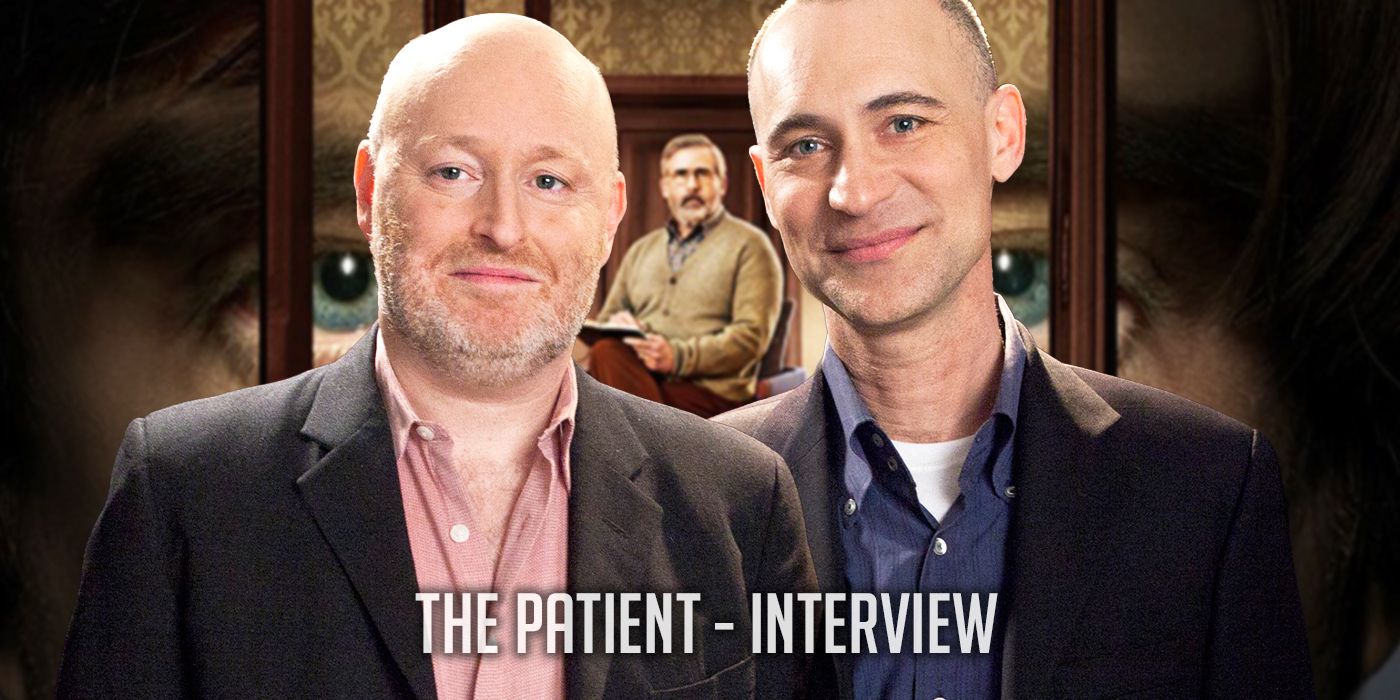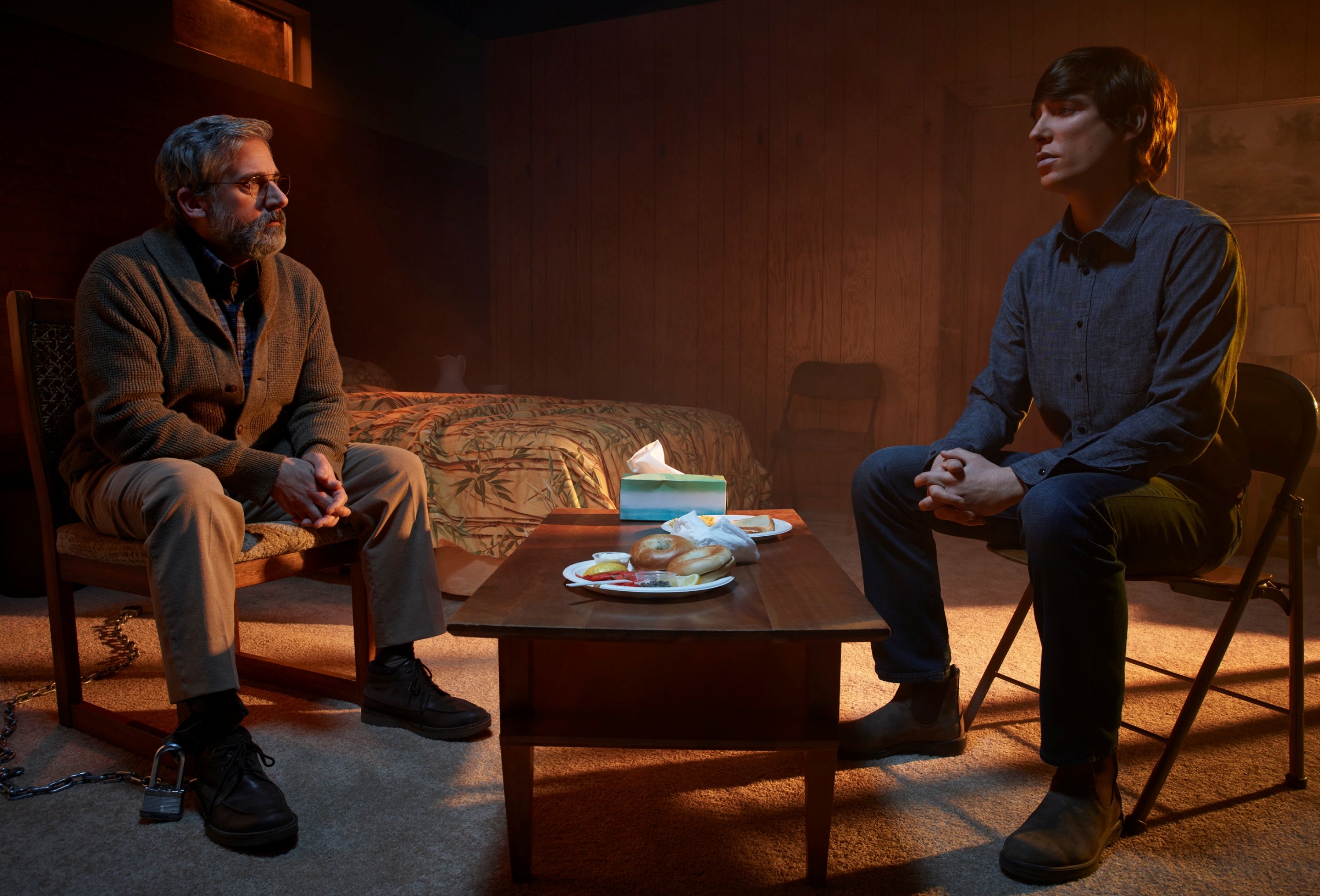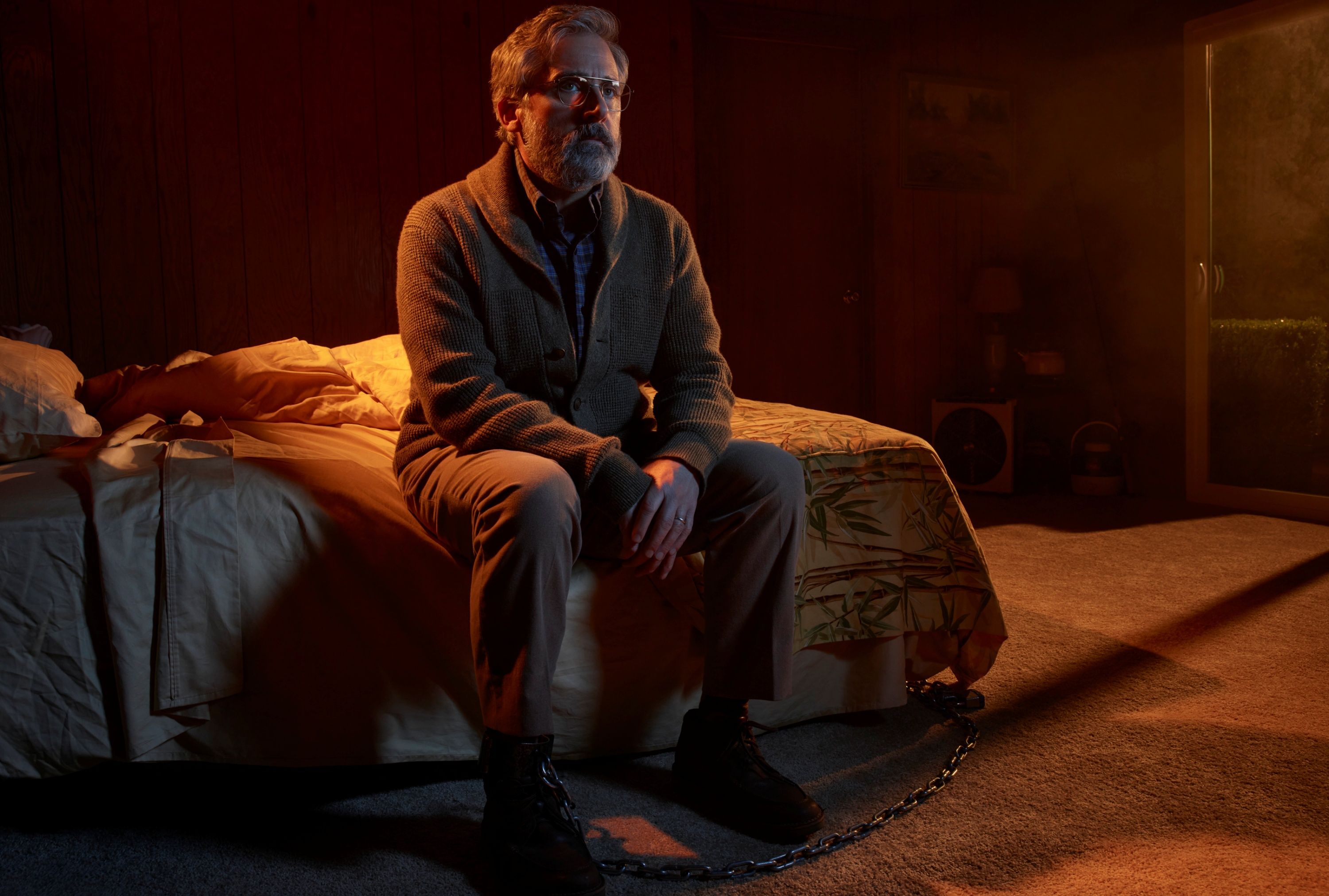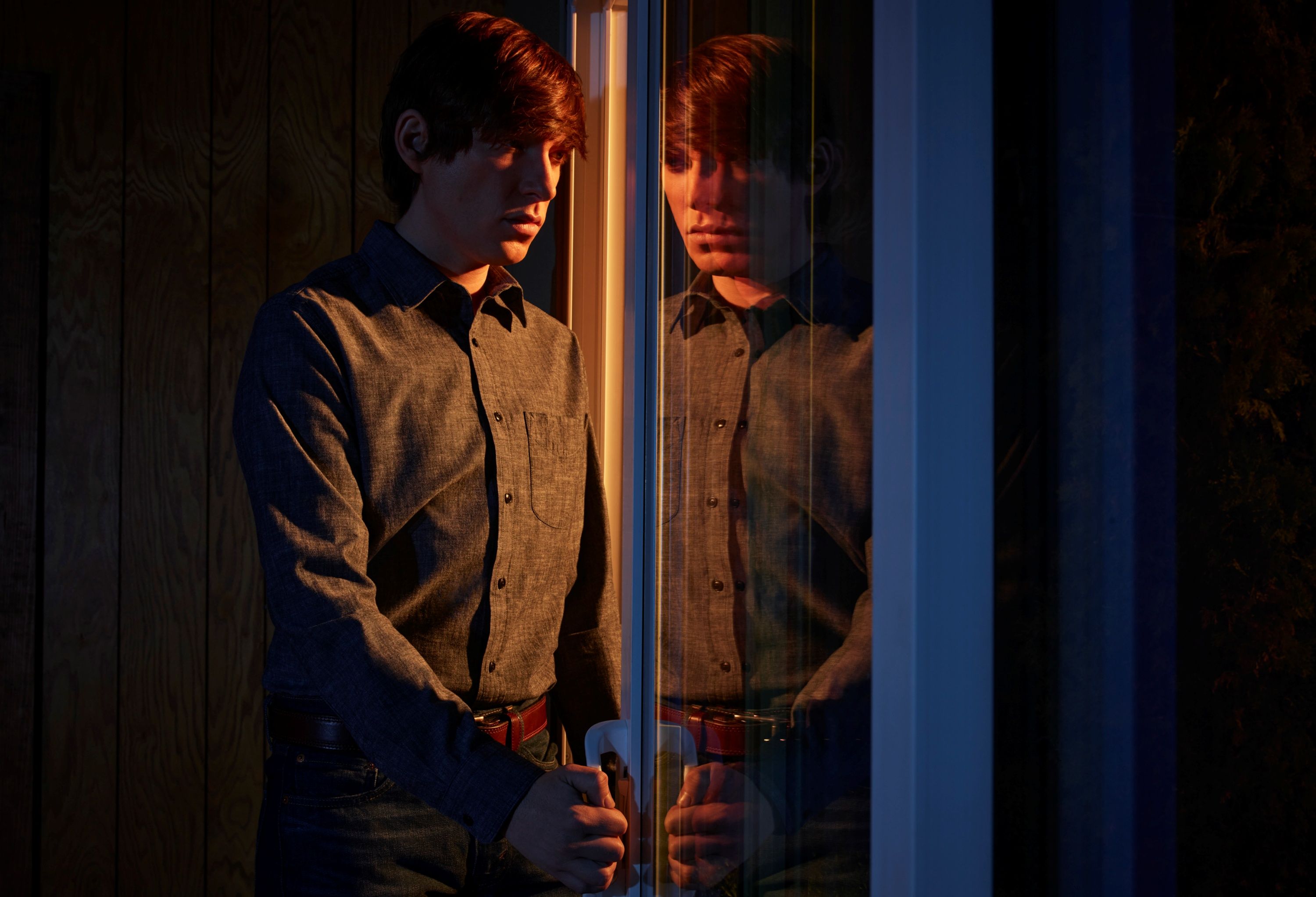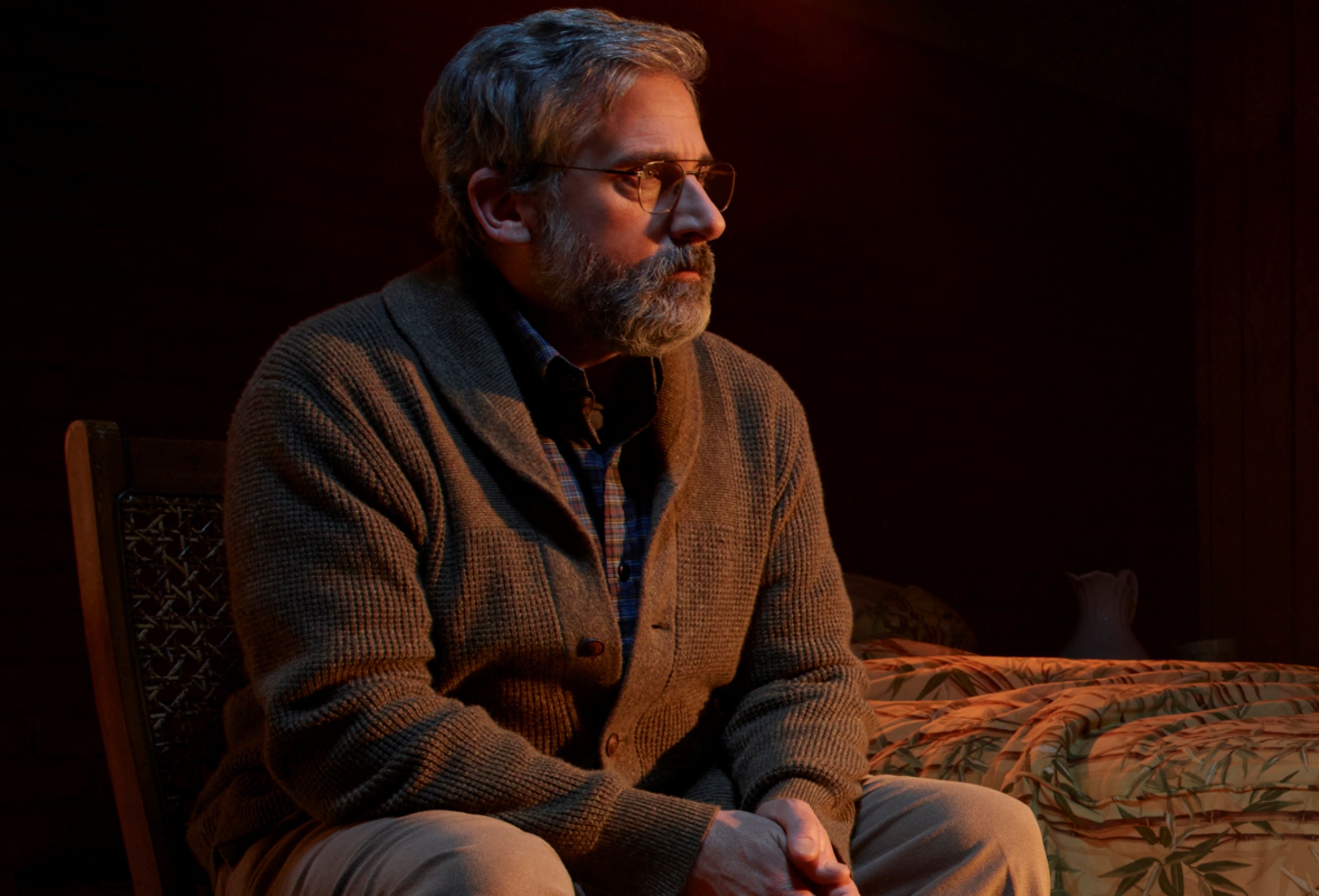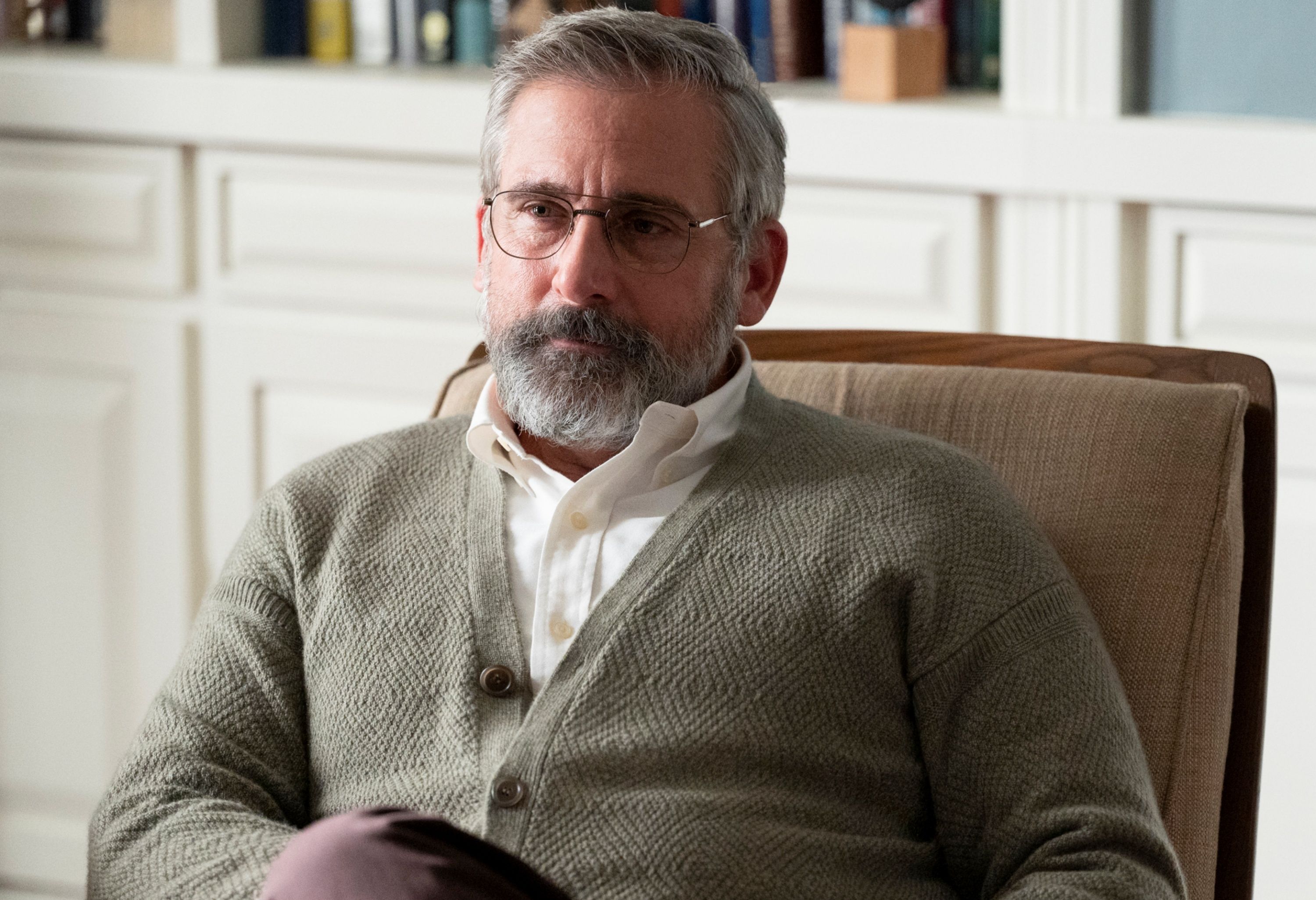From show creators Joel Fields and Joe Weisberg (The Americans), the FX psychological thriller series The Patient (streaming at Hulu) tells the story of a terrifying relationship between therapist and patient, when serial killer Sam Fortner (Domhnall Gleeson) kidnaps Alan Strauss (Steve Carell) to curb his homicidal urges and keep him from acting out on that overwhelming compulsive need. As their own histories and family dysfunctions are exposed, Alan does everything he can to try to keep Sam from murdering anyone else and convince him to end his imprisonment, but being chained to the floor makes it increasingly difficult for him to see a way out.
During this interview with Collider, executive producers Fields and Weisberg talked about how this series evolved into what it is now, casting their lead roles, weaving aspects of the story that are very personal to them with the serial killer element, keeping Carell chained up all day, figuring out the food that would play into Sam’s obsession as a foodie, and how every decision on set is critical when you do a project that’s so stripped down.
Collider: What was the seed for this idea? Did it start with the therapist? Did it start with the patient? Did you think about one before the other, or were they always together in your mind?
JOEL FIELDS: It really started with our mutual interest in therapy and the value of self-reflection, as a tool not to navel-gaze, but rather to find meaning in one’s relationships in one’s life and to try to empower one’s self in one’s life. We were talking for quite some time about, how could we do a show about that? It turns out that, while that’s really compelling to us, that is very boring dramatically. But as soon as you have the idea of the most messed up person in the world wanting to enter therapy because they get that they’re messed up, i.e. a serial killer kidnapping a therapist because they genuinely want to get better, then suddenly something was happening, and we were off to the races.
Once you had these characters, was it always these actors? With the fact that pretty much everything relies on the two of them, casting seems like it would have been very important. Did you immediately think of them? Did you have anybody else in mind? How did that work?
JOE WEISBERG: It’s an interesting thing because in Hollywood, there’s a lot of, “Who do you picture?,” and Joel and I never really thought that way. I don’t know what he has in his head, but in my head, I have an amorphous blob for every person, when we’re writing. It’s barely recognizable as human. I don’t know if Joel has a blob.
FIELDS: It’s just like cotton candy.
WEISBERG: We had the scripts by the time we started trying to cast. It was just like everything else, if you don’t get the casting perfect, you can basically ruin your show, but it’s not easy to get it perfect. In this case, in certain ways, we got lucky because we had heard that Steve [Carell] was interested in talking to us and maybe wanted to do something with us, one day, and it was literally a coincidence that we happened to have just written something with a perfect part for him. And our casting director said, “Domhnall Gleeson would be an interesting person to look at.” And then, he turned out to be a crazy genius who could inhabit this very unusual serial killer. It’s hard to play a serial killer with the complex psyche of this guy.
Honestly, watching the two of them together is so brilliant.
WEISBERG: The whole thing depends [on them].
FIELDS: I would basically say, the day of the first read-through was incredibly tense, and then an incredible relief.
You guys have talked about the Jewish themes of this story being very personal and important to each of you. What is it like to weave the personal aspects with what you’re more removed from, which is a serial killer? Does it make the story easier to create, write, and explore when you have that personal thread that runs through it, or is it more challenging when it’s something so personal that you’re weaving into something that’s not as personal?
FIELDS: At turns, both. There was a lot of it that was easy because it was so familiar to us, and it came from very, very deep places inside each of us, individually, but also, inside of us together, and from joint cultural references and experiences. It was also challenging because dealing with personal stuff is challenging. It was all of it, which is a good place to create from.
WEISBERG: Although it may sound silly, I don’t think really we necessarily did feel that removed from Sam because, opposed to the average serial killer who you think of as the guy from The Silence of the Lambs, this was a serial killer who wanted to get better. That was something that we could relate to very powerfully, just from having issues and problems, of all varieties, that we’ve worked in therapy, among other places, on healing ourselves and getting better. Sam was pretty human. I occasionally thought I related better to him better than Alan, which is slightly perverse, but true.
When you really peel this story down to its bare bones, it’s about humanity. What do you see as the common humanity between these two characters?
FIELDS: First of all, thank you. That means a lot, that you see that. And also, I’d say I’m not sure that we have a better answer to that question than anybody who watches the show will have. I think just the fact that you see it that way and that can be taken away from it is, to us, really what we were setting out to do. That really means the world. There’s no further reduction there, except to say thank you for seeing that.
WEISBERG: By the way, that goes back to the casting question because some of that is conceptual, in trying to create a character who you can relate to, even in unusual ways, but there’s also an actor who’s able to inhabit somebody like that and draw you in, instead of keeping you at arms length.
How did you approach finding the balance between making Sam an interesting character that you can almost understand, but then still making sure people remember that he’s a serial killer that you shouldn’t necessarily feel sympathy for? How did you figure out when to bring those moments out, to remind people?
WEISBERG: I think that our approach is to only be concerned about the half of that equation that is bringing people in, and not worry about reminding anybody about the horrible things he does. We show them, so it’s not like we’re leaving that out. I don’t think we have that worry, exactly. Although, we understand that is something that people would worry about. It’s just not quite our way.
FIELDS: I think that’s exactly right. As you say, there’s no hiding what he does and who he is, and all the bad parts. He’s very upfront about it. That’s part of the point. And so, the harder part is actually to see the dimension and the ache under it, and the common humanity under it.
I think that’s why it’s so interesting to watch these two characters because you really are stripping down Alan the whole season, to show that he is far from perfect, as a person, as a father, and even as a therapist. While we know we’re obviously not supposed to like the serial killer, there are also things in Alan that we don’t like, the more we get to know him.
FIELDS: Well, there are things in ourselves that we don’t really like. It’s very easy to make excuses for them and to not see them, but the only way to grow and be better is to examine and face them.
What was it like to have to keep Steve Carell chained up all day? How was the experience of working with him on this, and working with the two of them on this, as they developed their characters and figured this dynamic out?
WEISBERG: It was pretty easy for us to keep him chained up all day. I think you really have to ask him that question, though.
FIELDS: I will say this, he was really chained up. He was given the option of a fake shackle that could be undone. When it was discussed, I remember saying, “Okay, but what if something happens? He’s really chained up.” But that’s what he wanted for his process, and boy, it worked. I will also add that when we finally got to wrap, and we were finishing up, I said to Joe, “You know, we’ve had Steve Carell chained for months on end. That’s gotta be something.”
That is quite the skill to put on your resume, after doing a show like this.
WEISBERG: Yes.
FIELDS: We chained Steve Carell to the floor. He was very good-natured about it, all things considered.
He had to know what he was getting into.
FIELDS: And he jumped in with both feet, one of them chained.
Therapist and serial killer are pretty generic descriptions that could include many different types of people and many different approaches to both of those things. Because of the type of serial killer that Sam is, did you steer Domhnall Gleeson in any one particular direction? Did you give him any specific research or tell him anything to help guide him, or was that more open for him to figure out?
WEISBERG: I would say more the latter. We thought that the script did a pretty good job of painting why this guy was not the stereotype, and why he wasn’t necessarily the type of serial killer you often see on TV and in movies. We certainly had discussions with him about that. He’s very curious. He did research on his own and wanted to talk about the character a lot, so we talked about it. But I don’t think we wanted to say, “Read this book,” or “See it this way,” or “See it that way.” We knew, from the first time we ever saw him read a sentence, that his own natural instincts on it were so great that we didn’t want to mess with it. If you send him to a certain book, then suddenly, he’s going that way.
Sam is obsessed with food, which we get a real sense of, as he’s bringing these different meals in for Alan. When you do something like this, where you have these two characters having conversations and most of it is in one room, and you have an element like the food, how much time did you spend figuring out and deciding what those meals would be? What did that involve?
FIELDS: Well, Joe and I like talking about food. Joe’s a real foodie. One of the things the pandemic destroyed for me was my excellent meals out at great restaurants with Joe. But I will say that one of the fun moments of this was sending our co-producer out to get these meals. As we were working on one of the final scripts, he went out and got this elaborate meal. Unfortunately, we were all on Zoom, so he got to have the meal and send us photos.
That doesn’t seem fair.
FIELDS: Figuring out the food was a lot of fun.
WEISBERG: Most of the dishes are real dishes, but we made up the dish with the udon noddles. One of the things I love about Hollywood is that we made it up, we got somebody to make it, and then she brought it to a props meeting, and we ate it. By the way, you’re not really supposed to eat the props, even when they’re food. There was the thought that we would just look at it in the props meeting, but we were not having it. We ate that prop and had everybody taste it. That was a high point of the show, from a producing perspective. Don’t be fooled about producing TV. It’s hard, but it’s got certain benefits.
Was there anything that particularly stood out for you, when it came to making a show like this, where so much of it is just two characters in one room? Were there things that surprised you? Was it more challenging than you expected?
FIELDS: Of course, every decision on that set was critical. Fortunately, we had a brilliant production designer, Patricio Farrell, and that team, and incredible directors. You’re right, when you’re just in one place, all the decisions become very heightened because what you’ve got is those characters together in that one place, mostly.
And nothing to distract with, which makes the whole thing so masterful.
WEISBERG: Thank you. And we have to give a lot of credit for that to Chris Long, Kevin Bray and Gwyneth Horder-Payton, who directed with that constraint, which is a hell of a constraint. It’s not for a play director, but for a TV director, that’s a hell of a constraint to give them and tell them, “Keep this visual. Keep it moving.”
FIELDS: But also never call attention to the camera. Just stay inside the characters. Never get caught directing.
The Patient is available to stream at Hulu.

